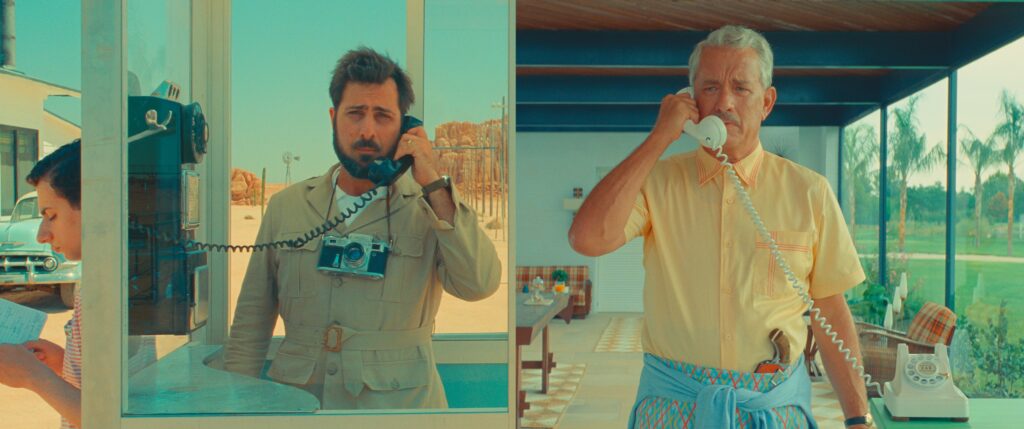

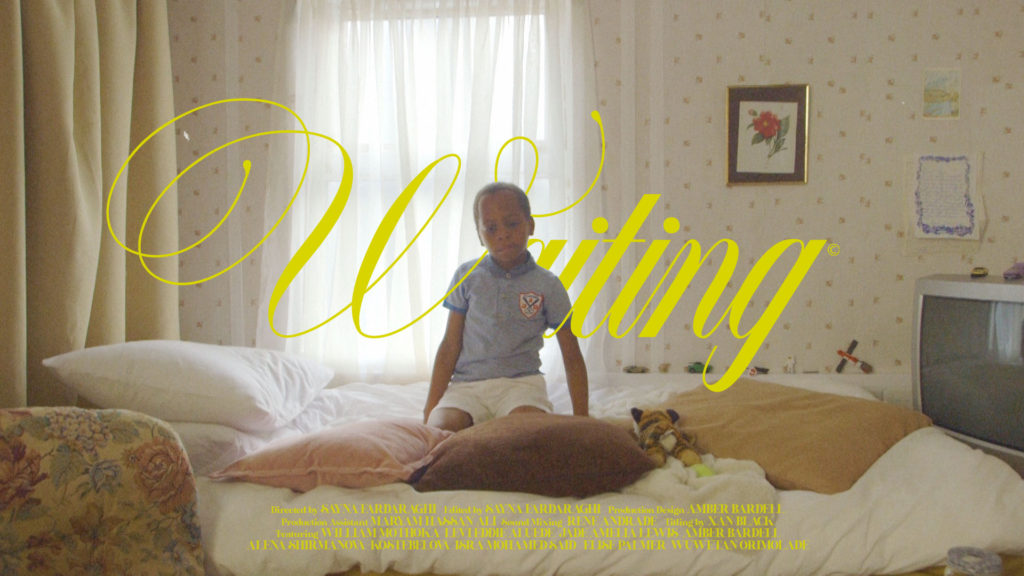
Meet with Sayna Fardaraghi
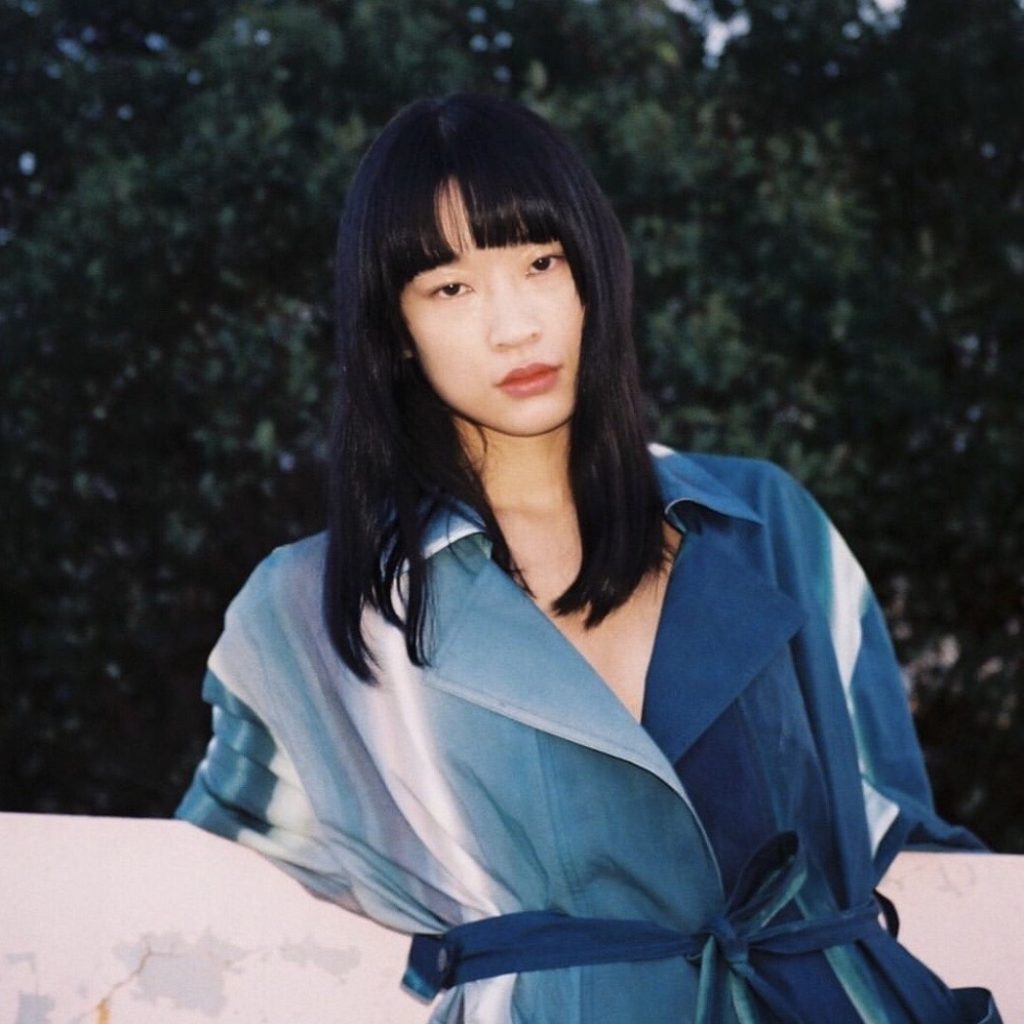
Stay Home × Movie vol.3
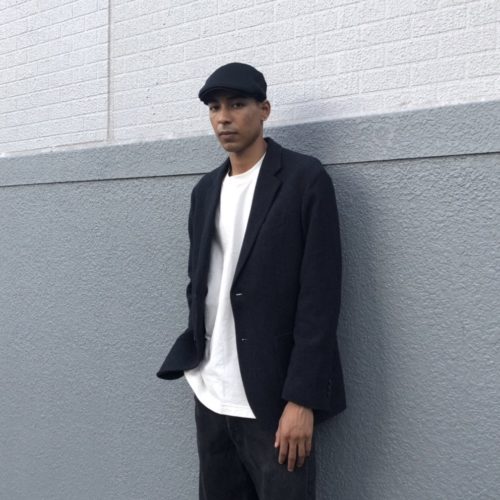
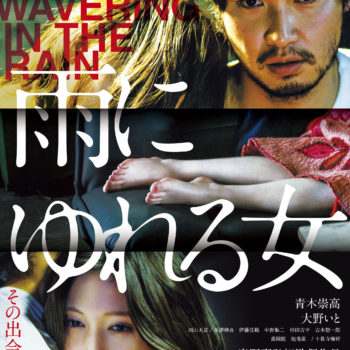
Interview:Yuzuka Kawaguchi/Saaya Kishaba
Text:Yuzuka Kawaguchi
Translation:Hazuki Yasunaga/Haruka Minami
Interview cut:Nao Kitamura
パリを拠点に活動する音楽家、半野喜弘。自身初となる監督作品『雨にゆれる女』は東京国際映画祭の「アジアの未来」部門にも選出され、今大注目の作品である。今回Woolyはそんな半野監督に単独インタビューを行なった。今作に込めた半野氏の思いとはー。
—まずはベーシックな質問からさせていただきます。『生きるということは完璧なまでに不公平である』というのが作品のテーマだということですがストーリーはどのようにして着想したのでしょうか。
そうですね。最初に青木崇高でやりたいというのが僕の唯一の条件でした。今回のストーリーの中に「のりお」といういう名前があって、あれは60年代に永山則夫という19歳で連続刺殺事件を起こした、日本の少年犯罪のエポックとなった事件を基にしています。永山則夫という男はずっと貧しい家庭で育ってきて、親からもほとんど見捨てられたような状態でした。要するに教育されてないからそういう事件を起こしてしまう。刑務所に入って死刑に至るまでの間、彼はそこでようやく初めて教育に目覚めるんですね。その後、いろんな本を獄中で読んで、彼は能力のある作家として賞を取るくらい成功するんです。それを聞いた時もしもこの人が僕たちが得てきたような通常の人生のチャンスを得てたらこうなったんだろうか、と考えるとすごくそれは自分の中で答えが出ないわけです。
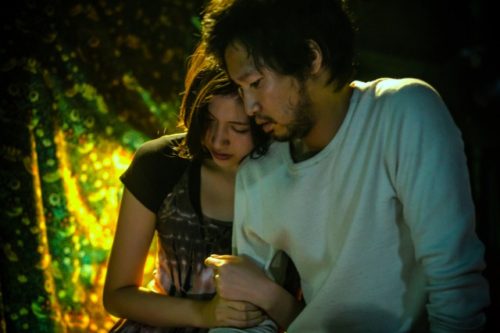
それから僕の母親は小学校の教師をしていて、当時母が勤めてた学校の近くにすごく貧しいエリアがありました。映画の中に出てくることは実話で、エリアの公園に行くと母の教え子のちっちゃな5歳くらいの子と妹が公園のゴミ箱から空き缶をとって飲んでいるんですよ。親が何も買い与えてくれないからお腹も減ってる。冬でもずっと半ズボン半袖でした。そういう子たちをよく母は家に連れてきて家でご飯食べさせて、あまりひどいと子供たちを家に何人も連れてきて、ある種の誘拐まがいのことをしていたんです。そしたら親が殴り込んでくるんですね。そういうのを子供の時から見ていて、僕は守られている側の人間だったので、単純に不公平だなって思ったんですよね。僕があっち側でもおかしくなかったし彼がこっち側でもおかしくなかった。でも誰にもどうすることもできない。それを人は「運命」とかって言葉で片付けるんですけども、そういうことではなく、はっきりと「これは不公平だ」と自覚した方がいいと思うんですよね。不公平だからダメだという話ではなくて不公平というのは元々あるんだ。背の高い小さい、美しい、美しくない、頭がいい、頭が良くない、運動神経が良い、鈍い、、、全部不公平ですよね。その不公平を経て自分という個性だということで、どのようにして生きていくかを考えるべきであって、本当はそんなことってないんだよっていう綺麗事は生きている上で通用しないと思っています。そういう思いが映画とは関係なく自分の中にずっとあったので、映画の題材の中に自分のリアルな体験と思いとして入れたという感じですね。
—青木崇高さんとパリで出会って作品が生まれたということですが完全に彼をもとに作品を作ったのでしょうか。それとも先にストーリーがあったのでしょうか。
完全に青木が先です。青木が頭の中にまず立っていて、俺の見たい青木崇高はどんなんだろう、どんな青木崇高だったら面白いんだろう。役に合う合わないってあるじゃないですか。今回の脚本に関してはこの男を青木がやったら面白いんじゃないかというのが一番決定的にこの話にした経緯です。だからストーリーは後から書きました。
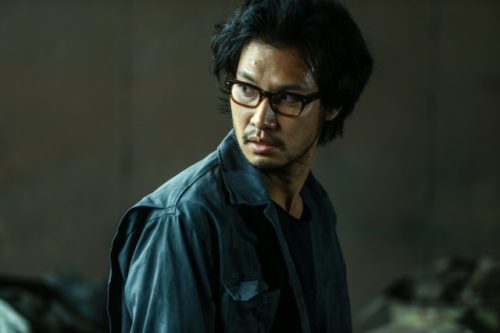
—監督のインスピレーションの源を教えてください
そうですね。現実って僕たちが思う以上に不可思議なことが多いと思うんですよ。たとえばニュースでもなんでもいいんですけど、「こんなことがありました」って言われたとします。それを事実と言われるから、そうだねと思うわけですよね。でもこれをたとえば人が「作り話です」という風にしたとするじゃないですか。それだと人は「いやそんなことありえないよ」って言うんですよね。でもそれは単なる認識の問題だけであってこれは本当に可能なことなのか不可能なことなのかっていう人間のジャッジはものすごくグラグラしていると思っています。だから物事を作るということにおいてはすべての物の中にある核心のものを自分のこれまで持ってきた常識のジャッジで勝手な解釈をしないということが僕にとっては一番重要なことです。
今回の映画でいうと、一番影響を受けて参考にしたのはカラヴァッジョの絵とセザンヌの絵です。パリに住んでるので実際に実物を見に行くことはすごく簡単なので。カラヴァッジョはなぜかっていうと、彼は宗教家なんですが、「黒」という色彩の意味合いは彼の存在以降僕は歴史が変わったと思っています。自分が映画の中で扱う「黒」というのは一体なんなんだろうか。要するに、黒は写らない。その写ってない部分をどういう風に扱うのか。それは本当に写らないのか。実は何かはあるんですね。人間の網膜では見えない何かがある。何かがあるっていう気配を人に伝えるためにはどういう風に色彩を配置をすれば、人は何かがあると思うんだろうか、ということをカラヴァッジョの色彩からすごく影響を受けて参考にしました。
セザンヌに関して言うとセザンヌの絵は一瞬を切り取ると言われていますが、セザンヌという人はピカソなどのキュビズムよりもはるかに以前に一つの時間帯軸の中に視点をバラけさせるということを実践していた人なんですね。よく見たらわかるんですけど、たとえばりんごの位置が、「リンゴだけ映るはずない断面が映ってる」ということをセザンヌはすごく考えていて。絵画が時間軸を得るためにはどうしたらいいかっていう。そこで彼はある二次元の面のものの時間軸をずらすことで三次元にすることを当時考えていた、と言われているんですね。本人から聞いたわけじゃないですけど(笑)
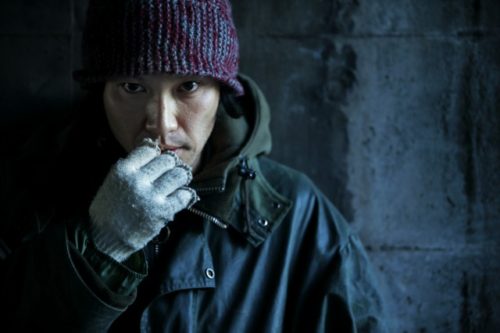
映画っていうのはまさしくそれをやれるようになったわけですよね。ある空間の視点が瞬時に変わるってことを操作できる。その時にある時間の中での瞬間的に視点を移動させるっていうことをどういう風に扱ってどういう時にどういう風に色彩が配置されていればいいのか。たとえばここでの健次という男がセリフを喋っている。このセリフをより人に届かせるためにはどの距離でどこに色彩があったら、たとえばバックに青があるか、赤があるかで多分その人の言葉の響きって違うんです、伝わり方が違うじゃないですか。だからそういうことを結構セザンヌの絵の果物の絵の配置とかを考えながら美術とか洋服の色を選んだり小道具の色の配置とか大きさとかそういうことをやったりしました。
—私たちもすごく色使いっていうところが気になっていました。私たちWoolyはファッションも扱っていたりするのですが、細かいところでいうと大野いとさんのペディキュアの色とかもここで青使ったんだ、とか服の素材とかも柔らかい素材使ったりなどかなり工夫されたんじゃないかっていうのを感じました。衣裳とか色使いについてもう少し聞かせていただけますか。
そうですね。今回衣装は宮本茉莉さんという方にやっていただいたんですけど、彼女は普段は完全にいわゆる衣裳部なんですね。でも最初茉莉さんと会った時に「美術が決まってなかったら服の色は決められないです。この理美っていう女がソファの色が何色かわからなかったらここのシーンの服の色は決められないです。」という話になって。僕たちそれは合わせられないですよね、普段暮らしている中で。僕たちが電車で座るシートの色は合わせられない。でもそこが合わさるからこそ普通のことが普通に見えなくなる。これが映画なんだから決めれません、ってことで意気投合しました。だから、「だったらもう全部やりましょうよ、一緒に。」ということでまず衣裳の候補を出してイメージはこうだ、でも実際現場に行って、ここのロッカーは結構朽ちてると。朽ちてるからここは割とつるっとした光が反射する生地の方がこの女の違和感出るんじゃないかとか。
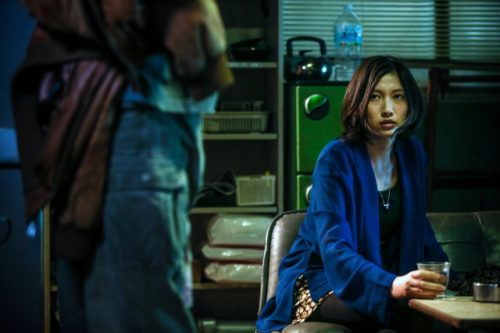
—素材も含めてっていうことですね。
はい。それからスタッフにここは絶対にベッドはグリーンにしてほしいと言ったら、「ものすごい洒落た部屋に住んでることになるんじゃない」という話になりました。でも、社員寮の畳上の一間のところで暮らしているのがリアルだっていう話だけど、そんな絵俺は見たくないんだと。全部嘘なんだから嘘だけども人がその世界に入り込めるってことにしたいと。そうした時に事実とは違いますっていう言い訳は聞きたくないのでっていう話でああいう場所にしてああいう色使いにしたんですよね。
—なるほど。では主人公の家の構造も演出の中で使われてたと思うんですけどロケハンとかにもこだわったんですか。
そうですね。プロデューサーに脚本段階であんな場所絶対ないって言われました。でも僕はそういう普通のアパートは絶対嫌だと。だったら映画は撮れないって。場所を探す担当の方がいたのですが、彼が本当に血眼になって探してくれて、撮影の一ヶ月くらい前に奇跡的に見つかりました。本当に何十年も使われてなかった工場で、外から見たらシャッターが閉まってて廃屋なんですね。プロの勘ってすごいですよね。「ここ」って思って管理している会社に電話してそこまで行って交渉してくれて、シャッター開けたら僕が言ってたように本当に二階だったんですよ。そこに水道引いて電気引いて、、、っていうところからですね。
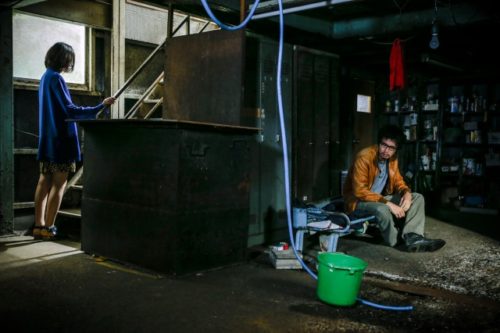
—すごいですね。本当にあの部屋の中が日本だけど日本じゃないようななんかどこかフランス小説とかに出てくる追われている身の人が匿っているようなそんなような光とか水道の出方とかすごく不思議でした。
あれを作るとなるととんでもないお金がいるし、あそこまでのリアリティが出ないじゃないですか。あの男が廃屋に自分でいろんなもの持ち込んで自分が暮らせるようにしたっていう設定だったので、実際にスタッフで電気も水道もないところで、どうやったら俺たちがここで暮らせられるか、っていうのでにらみ合いっこしながら、「じゃあこの何年かでどうやってこの男はこういう住まいを作るだろう」って想像しながら動線を決めていきました。
—全体的な男らしさの中で「女」をタイトルに入れた経緯を教えてください。
この映画は男が主演でサスペンスやハードボイル的な匂いがあるので、ここで女っていう方が「何が起こるんだろう」って違和感を持つんじゃないか、謎が深まるんじゃないか、と相談されて「そうだな」と思って、字面も語呂も好きだったのでこのタイトルなりました。
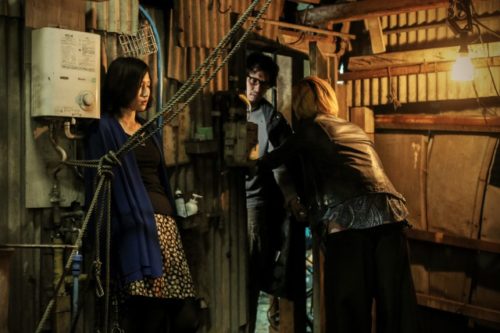
—最初のイントロダクションの赤い字幕のかっこよさと『雨にゆれる女』というタイトルが「どんな映画になるんだろう」って思って気になりました。
あのタイトルロゴと「AOKI」とか出るじゃないですか。あれもプロデューサー含めて全員に大反対されて(笑)「意味不明なロゴが入ってるのも意味わかんないし、読めないし。」って散々言われたんですけど、絶対に譲れない部分でした。最後は「もういいです、勝手にしてください」って半ば捨てられた感じで決まりました(笑)
—でも綺麗な映像とか切ないだけの映像だとロマンス映画みたいに思われそうなタイトルでもあるのでいい意味でアンマッチな感じが衝撃的でした。
見始めた人が「なんなんだこれ?!」となるような疑問と違和感が少しでも膨らむようになればいいなと思います。
—大野いとさんの儚さが印象に残りました、特に声がとても素敵でしたよね。ヒロインに大野さんを起用した理由を教えてください。
ヒロインは最初からずっと僕の中に誰の像もなくて、色々と候補はあったのですが、なんとなく決め手に欠けていたんですよね。そんな時プロデューサーが大野の写真を持ってきて、顔を見たときは直感的に「あ、理美」って思ったんですね。演技は未知数でした。でも少し違和感があったんですよね。普通にダメという話ではなくて、この子って何かちょっとずれてるんじゃないかなっていう。だとしたらそのズレをうまく転換させればもしかしたらこの子ってすごい面白い存在になるんじゃないか、と思って実際に会ってみたら本人はそこまで考え込まなくていいよってくらいすごく考える人で、「いける」と思いました。それから、「いと」という名前が僕のひいおばあちゃんと一緒だったっていうこともあります。こういうのって結構大事で、ちょっとした何かが背中を押してるんだろうなって思って。結果的には本当に大野で良かったと思っています。彼女が現場で覚醒していく様は見ていて頼もしいくらいでした。毎日泣いてましたけど。多分全日泣いてましたね、悔しくて。「きっともっと『こうやれ』って言われてたのに私はできなかったんじゃないか」って大野はあのとき思ってたと思います。僕はOKって出してるんだから、僕が思ってたことやれてるんですよね。でも彼女の中では多分彼女が見てるもっと別の何かがあったんだと思いますね。悔しくてずっと泣いてる、その姿を見ているとこれは日々成長するんだろうなっていう風に思いましたね。まあ実際にそうなりましたね。
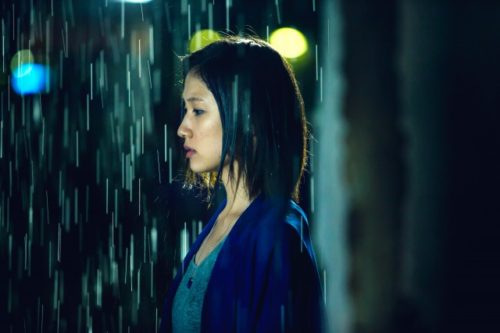
ー今作が初めての監督映画だったと思うのですが大変だったことなどはありましたか。
やってて大変だったことは実際の作業としてはないですね。出資者とのお金集めの面倒臭さくらいですかね(笑)。ものをつくることについては好きでやってることなのであんまり苦労だとは思わないですね。他人から見たら苦労に見えることも何も苦労ではないので楽しいだけなんです。好きでやってるから苦しいことも楽しいじゃないですか。でも金集めはほんと嫌でしたね(笑) 全員をマシンガンで撃ち殺してやろうかと思うくらい嫌でしたね(笑)
—(笑)。美術の話に戻ります。映像や音楽でこだわった点を教えてください。
そうですね。映像に関して言うと色彩の配置というのももちろんそうなんですが、役者の息遣いをいかにレンズを通して納めるか、そのためにはどんな要素が必要か、ということを考えていました。この男の息遣いを取るためには、この男の背景にボケている色は何色であるべきか。でも、人が嘘であってはならない。やってることは嘘なんですけどね。肌から立ち上ってくる人の匂いとか、この男は今どのくらいの湿度を持っているのかとか。そのことをカメラで捉えたいということが映像では一番大きくて。音に関していうと、嘘の世界を強固に作っていくためには、遠くにいる人の声も近くにいるように聞こえるのが映画の音なので、その嘘をいかに綺麗につくか。フィクションっていうのは綺麗に人を騙すことなんですね。淀みがなければないほど人って信じてくれるわけじゃないですか。そういう風にするためにはどうしたらいいのかなという意味で、リアリティと非現実性のバランスの組み合わせを音でもたくさん試しました。
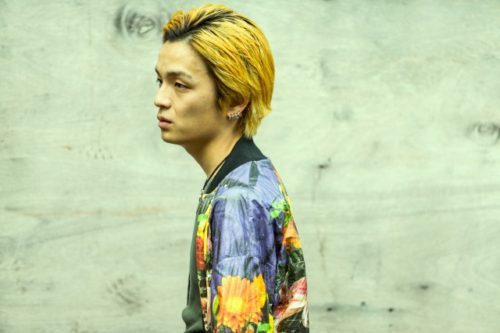
ー最後の質問です。今後どういう作品を手がけていきたいですか。
僕は日々生きる上で音楽を仕事に選んでいるので、音楽はクリエイティビティであり、自分の人生を生きるという意味での仕事でもあって、バランスが必要なんですよね。映画はそうではないところでやりたいと思っています。要するにバランスをとらないでいい、やれることをやれるならやりたい、ということ1点に絞ろうと思っていて、極論でいうと仕事にしないっていうんですかね。映画は撮り続けていきたいと思っていますが、映画監督を自分の職業の主軸にしようというのは今のところ全くなくて、そうでないからこそやれることを、僕たちみたいな立場で映画を作っている人たちがやるべきことだと思ってますね。「半野さんそんな無理言ってたら次撮れないよ」って言われますが、僕は次作れなくて何か問題あるんですか、と思っています。なぜなら1つの作品を妥協するくらいだったら次の作品は作りたくないですね。だからここで負けるか、ここで勝って次負けるかなんでしょっていう。だったら今の勝負だけでも勝ちたいんで今だけは無茶でもやります。次のことはもう知らないです。ここ負けたら次はもうないんで。そういう感じでやっていくのでそれでも一緒にやりたいっていう仲間がまた出てきたらやります(笑)
ーではあくまで音楽をメインにっていうことですね。
そうですね。音楽は逆で僕は映画の中のスタッフなのでその映画のために僕の力をそこに投影する。作るのに関してはまた話が違うので。
ーありがとうございました。
インタビューを終えて、半野氏の美に対するこだわりを垣間見ることができた。自身の美的哲学を語る傍、関西出身ならではの気さくな口調でユーモアあふれるトークを展開してくれた。自身初監督作『雨にゆれる女』は11月19日(土)よりテアトル新宿にてレイト公開される。こだわり抜いた映像美と音楽、そして衝撃のストーリーに、あっと驚くに違いない。
半野喜弘
1968年生まれ。パリを拠点に映画音楽からオーケストラ作品、エレクトロニクスミュージックにいたるまで、幅広く世界中で活躍する音楽家、アーティスト。ジャンルを超越した創作活動は、独自の存在感をもって常に斬新な感動を聴く者に与え続けている。
【映画情報】
監督・脚本・編集・音楽:半野喜弘
出演:青木崇高 大野いと 岡山天音 他
企画・制作プロダクション:オフィス・シロウズ
配給:ビターズ・エンド
公式サイト:http://www.bitters.co.jp/ameyure/
11月19日(土)、テアトル新宿にてレイトロードショー!
© 「雨にゆれる女」members
Yoshihiro Hanno, is a musician based in Paris. His first ever directed film “Woman Wavering In The Rain”, was selected in the “Asian Future” category in the Tokyo International Film Festival, and marks his debut in the film industry. In this edition of Wooly, we present you a one-to-one interview with Hanno, revealing his intentions regarding this piece.
-Let me start off with a basic question. The theme for this film was “To live in this world is completely unfair”, but how did you go about to conceive the story line?
Well to start with, the one and only condition I had in mind was to cast Munetaka Aoki. In this story, there is a character called “Norio”, who is based on the spree killer, Norio Nagayama. In the 60s, he murdered 4 victims at the age of 19, which became an epoch-making case of Japanese youth crime. Nagayama was brought up in poverty, with parents who neglected him. Basically, he committed the crime due to his lack of education. During his imprisonment until the execution, he finally gained access to a proper education. From them on, he read all sorts of books, and succeeded as a writer, winning prestigious awards. My question when I encountered this story was, what would he have become, if he had the same, regular chances in life that we all take for granted? I couldn’t think of an answer.

Also, my mother was an elementary school teacher, and back then there was a very poor area near her school. The details in the film are true; I saw one of my mother’s pupils – about 5 years old – and his little sister in a park, drinking from juice cans picked up from trashcans. Their parents couldn’t buy them anything, so they were starving. I remember they wore t-shirts and shorts even in winter. So my mother used to invite those kids home and feed them, and when things were tough, she brought back a whole bunch of them. I have to say, they could be regarded as mild cases of kidnaping. So then the parents of those poor children would come banging on our door. Growing up and witnessing all this as a child, I felt that it was unfair. I could’ve easily been in their situation, while they could’ve been in mine. But no one could do anything about it. People tend to just regard it as their “destiny”, but I feel that we should realize that life is undeniably “unfair”. That doesn’t necessarily mean it’s bad, but that unfairness is completely natural: being tall, short, beautiful, ugly, smart, dim, sporty, lousy… They’re all forms of unfairness. We must accept that as our individuality, and search for a way of living – denying its existence is the worst way to deal with it. I’ve always had that kind of mentality, so I included it in the film as my real experience and ideas.
-I understand that the film got started up when you met Munetaka Aoki in Paris. Did you build the whole piece around him, or did the story exist beforehand?
Aoki definitely came first. I pictured him in my head, and thought, what is it that I want to see him do? How would I make him interesting? There is the question of whether an actor suites the character in any film. Regarding this piece, I was confident that it would be very interesting if Aoki played this character I had in mind. So the story came afterwards.

-What would you say is your source of inspiration?
Well, I think that there are more strange things in reality than we realize. For example, the news tells us events that have supposedly happened. We are told that it is true, which is why we believe it. However, say somebody comes along and says it’s all a lie. Then people are just going to dismiss it and say it’s impossible. But it’s really an issue in our perspective, and I think that our judgments on whether something is possible or not is very faulty. So in the creative field, it is important for me to avoid judging the fundamental, core concept of things, using my common sense.
Concerning this film, I have had a great influence from the artists Caravaggio and Cezanne. Living in Paris, it is very easy for me to go and see their paintings in galleries. I refer to Caravaggio, because I feel that he has changed the metaphorical meaning of the color black, in the history of art. What does the black used in my films mean? Basically black cannot be projected on screen. Then how do I approach it? Is it really just a blank space? In fact there is something; something that humans cannot see. Then how do I arrange the colors to make people sense the presence of it? For me, Caravaggio’s works hold an answer.
It is said that Cezanne’s paintings capture a brief moment of time, and indeed Cezanne was an artist who experimented by placing different perspectives in a single piece, long before Cubism artists like Picasso did. When you look closely, for example, you realize that an apple is placed in an impossible angle in the painting. He thought hard about how to give paintings a sense of time. So by creating a time lapse within a 2D piece, Cezanne tried to make it more 3D. Not that I heard it from himself!

And film is the exact media that enables us to do that. We can control and change the perspective of the frame in a flash. Not only that but we can control how to change the perspective within a certain time and space, and how to arrange the colors within the frame. For example, a man called Kenji is saying a line in this scene. In order to deliver this message to the audience in a persuasive way, we need to think where and what distance the colors need to be. Like, having a blue background and a red background would alter the nuance of the dialogue, and therefore how the audience receives it. So I studied Cezanne’s still life paintings while choosing colors for the art and fashion, arranging props and so on.
-We were very intrigued by the use of color in your film. Our magazine features a lot of fashion, and we noticed the small details like how Ito Ono had blue pedicure on, and how a lot of the clothes’ fabric appeared to be very soft. Could you tell us a little more on the costume design and the colors you chose?
Ok, so I had Mari Miyamoto as the costume designer, who usually specializes solely on fashion. But when I met up with her, she said “I can’t decide on what color the costumes are going to be, unless the art is determined. If we don’t know what color the sofa is going to be, we can’t decide on the color of the girl’s clothes. ” It’s funny how we don’t have the power to control that, in real life. We can’t match our clothes to the color of the train seats. But that is precisely why things begin to look unordinary when we can. We agreed that neither art nor costume could come first so, we decided to do all of it together. We would plan the costumes according to our images, and then go out to the shooting location. There we find that maybe the lockers in the background were old and rusted. Then we might change the clothes’ material to something smoother that reflects light, so that the character’s presence would visually be more out-of-place.

-Not just the taste of fabric but you considered many other facts.
Yes. And when I told I want green for the bed to the staff, they were concerned that ” the room is going to be too fancy.” usually people would make the situation real by making the character live in a small normal boring room. But I don’t want to see anything like that. Everything is going to be a lie anyways, so if it’s a lie, I wanted to make a world that would attract and draw in the audience.
-I see. I think the inside structure of the protagonists house was in the production as well but did you have any particular perspectives for location hunting?
Yes. The producer told me when he read the script that there won’t be anywhere like the one in the script. But I said I don’t want a mundane apartment room. I am not going to film with something like that. The person who did the location hunting, he searched very hard for me and miraculously found the perfect place just one month before the filming started. It was a factory which has not been used for decades, that from the outside, it looked deserted. The instincts of professionals are amazing. He was like “this place is it!” The next thing, he called and went over to the property management company to negotiate. The fascinating thing is that as we pulled up the shutter, it was a two story place just as I wanted it to be. There, we started from pulling the water and electricity.

-That’s amazing. It felt as if the room was in Japan but not really. Something that would appear in a French literature story, where someone would hide themselves in. The way the lights and tap water appeared made it all so mysterious.
To create this room from the start as a set, we would need tremendous amount of money and it’s still not going to be as real as we have in the movie. Inside the movie, the man brings things from the outside and makes his own place to live so we, as creators, tried to go through the same process by thinking of how we can survive in a place with no electricity or water. “how will the man create his own habitat throughout the years?”
-In this whole masculine scenario, why did you decide to include the word “woman” in the title?
Someone told me, this movie has a man protagonist and an overall suspense and hard boiled image, so by including “woman” in here, people will more like become curious of “what is going to happen” making the movie more mysterious. I was very convinced by this, plus, I liked the appearance and the euphony of the words so I decided to include it in the title.

-In the first introduction, the red subtitles and the title, “a woman wavering in the rain” made me wonder “what kind of movie is it going to be?”
You saw the word “AOKI” next to the title right? Everyone, including the producer, was strongly against this saying “the logo doesn’t make any sense and you can’t even read it.” But I had to have it. At the end, everyone gave up saying “we don’t care anymore. do whatever you want to do.”
-If it were only beautiful, innocent moments on the screen, the title can likely be misinterpreted as a romance movie so the mismatch was surprising in a good way.
It would be great if people will wonder “what is going on?” and their suspicion and uncomfortableness grows.
-Ito Ohno’s fragility stuck out in the movie, especially her voice was good. Can you tell me why you chose Ito Ohno as the lead role?
I always didn’t have any particular person in mind for the lead female and we did have some people to choose from, but I couldn’t find “the one”. Then one day, the producer showed me Ohno’s picture and instinctively, I thought ” wow, this is Satomi.” I didn’t know anything about her acting. But she had this little uncomfortableness. I had this feeling that something about her is out of alignment. When I met her in person, she was someone who thinks deeply about everything until we get worried and that’s when I thought “she’s the one. ” it was also because my great grandmother had the same name “Ito”. Things like these are important and I think something was pushing me in the back. As a result I am really glad it was Ohno. It was reliable to see ono grow in every shoot. Even though she was crying every time. She probably cried every day from frustration. “Probably he said to do this more but I didn’t do enough.” I think she was feeling like this in those times. I’m giving an ok so I’m able to shoot what I want. But inside of her, she probably had her own something she was looking for. By looking at how she cried out of frustration, I could see how she would grow better and better every day. And she actually did.

-This was your first time being a film director but were there any difficulties you faced?
There was nothing really difficult in the actual process. Probably finding the investor and gathering all the money was the only hard part. I like creating things so I don’t ever think it’s tough. Things that would appear hard for others isn’t really hard at all for me so I’m pretty much just having fun. Tough things are fun when you like what you’re doing right? But I really hated gathering the money. Disliked it enough I thought I would shoot every single person with a machine gun.
-Haha. Let me go back to the art. Did you have any particular thoughts about the image or the music?
For the image, of course the placement of colors, but I was also thinking about how to show the breathing of the actors through the lens and what kind of aspects I need for this. If I want to film the man’s breathing, what color should the blurred background be in. But the person can’t be a lie. Even though the things he’s doing are a lie. The smell of that person coming out of their skin, the humidity the man is feeling inside his body right now. My focus for the image is to capture these details on camera. For the sound, to make a strong structured fantasy world, usually in movies, the voices you hear from far away actually sound very close, so I mainly think of how beautiful you can tell that lie. Fiction is when you beautifully tell a lie to the audience. The less stagnation the more people believe. I was trying out many realistic and unrealistic combinations with sounds as well to make it believable.

-This is my last question. What kind of projects would you like to create in the future.
I choose music as a job in everyday life, music is my form of creativity, but it’s also a job that makes me feel like I’m living my own life, so balance is the key. I don’t want this for film making. In other words, I don’t want to feel the need to balance it out, I want to do whatever I can if I have the ability, I want to focus on one point, which means in extreme not making it my job. I do want to continue making film, but I never had the thought of making a film director as my main job. There’s a lot of things that I’m able to do because I’m in this position, and I think it’s a duty for all people who are in the same position to consider this ability when create things. People say “Mr. Hanno, you won’t be able to film a next one if you keep being unreasonable.” But I would think what’s the problem of not being able to film another movie? If I have to compromise on one film, I wouldn’t want to make another one. So it’s either you lose this one or you win this one, but lose the next. I would rather win the one right now so I would do anything for now. Until I win I never think about the future. If I lose now, I wouldn’t have the next battle. I think of film making like this, so if I find anyone who understands me and my ways, I would consider making another film.
-Well then you’re focused on your music career more.
Yes. Music is the opposite where I’m the staff of the film, and I give everything I have inside of me for that film. Making and creating the film itself is another story.
-Thank you very much for sticking out with us.
From the interview I was able to take a glance at director Hanno’s perspective on beauty. While talking to us about his own aesthetic philosophy, his friendliness and unique sense of humor, something coming from his background of growing up in Osaka, stood out to me. His film, “A Women Wavering in the Rain” premieres on Saturday, November 19th at Theatre Shinjuku. The beautiful image, music, and the shocking story will surprise you.
Yoshihiro Hanno
Born in 1968. Musician and artist based in Paris. Worked in various fields such as film music, orchestra, and electronic music. Recent projects in film music are “Pink and Grey” (15) by Isao Yukisada, “Satoshi: A Move for Tomorrow” (16) by Yoshitaka Mori. His projects transcends genre and continuously gives us a novel excitement with unique presence.
【Movie Information】
Director/Screenplay/Editor/Music:Yoshihiro Hanno
Cast:Munetaka Aoki Ito Ohno Amane Okayama etc
Production Company:Office Shirous
World Sales/Distributor in Japan:Bitters End, inc.
Official Web Page:http://www.bitters.co.jp/ameyure/
Premieres on Saturday, November 19th at Theatre Shinjuku
© 「雨にゆれる女」members



